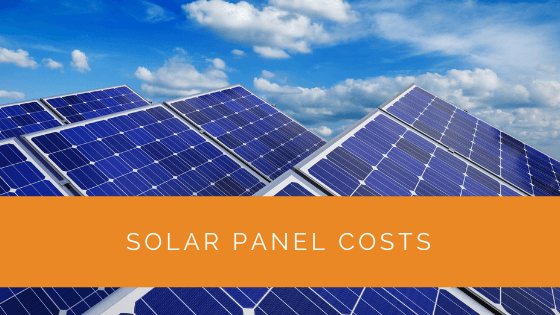Renewable energy sources have become increasingly popular as we strive towards a more sustainable future. Solar panels are one such solution that has taken the UK by storm, and for good reason. Not only do they provide an eco-friendly way to power your household, but they can also save you money in the long run.
However, the installation cost of solar panels is often a concern for many homeowners. That’s why, in this article, we’ll take an in-depth look at the various factors that influence the cost of solar panels, including the type, size, and quality of the panels and the installation process. We’ll also explore the potential savings and earnings of investing in solar energy, such as reduced energy bills and the possibility of selling excess energy back to the grid. By the end of this article, you’ll better understand the benefits of harnessing the sun’s energy and how you can make it work for you.
Contents
- 1 Key Takeaways
- 2 Average Cost of Solar Panels
- 3 Solar Panel System Cost Factors
- 4 How Much Do They Cost?
- 5 Can You Earn Money from Installing Them?
- 6 Smart Export Guarantee – Is it Worth it?
- 7 The UK Cost of Solar Power – How Can it Benefit You?
- 8 Find Out How Many Panels Your House Requires
- 9 Additional Cost
- 10 Carbon Footprint Minimisation
- 11 Solar Battery Importance
- 12 Solar Thermal System Costs
- 13 Benefits of Solar Panels
- 14 Case Study: Residential Solar Panel Installation
- 15 Expert Insights From Our Solar Panel Installers About Solar Panel Costs
- 16 Discover the Power of Solar with Solar Panels Network
- 17 Summing Up
Key Takeaways
- Solar panels are becoming increasingly popular in residential and commercial properties to reduce energy bills and transition to renewable energy sources.
- The cost of solar panels in the UK varies but the average cost is £7,800, depending on factors like location, panel efficiency, and system size. Factors such as roof pitch angle, type of panels used, number of panels, access to sunlight, and orientation can influence the cost.
- The Smart Export Guarantee (SEG) offers compensation for exporting renewable energy, making solar panels a financially attractive option. The SEG payments reduce energy bills and add value to properties.
Average Cost of Solar Panels
The solar PV system advances daily and has become common for most UK households. Therefore, you will find a solar panel system in most homes. Even then, people tend to find the solar panel installation cost high.
Installing solar panels on your roof will require planning to initiate the energy-saving aspect. The right company will help you, in the long run, to make money and afford the outlay.
Solar panels cost on average, £7,800 in the UK, depending on your location and installer.
Solar PV systems can produce 250 Wp per panel, so you will require four solar PV systems to produce 1kWp.
In turn, the 4 kWp requirement of approximately 16 panels is put together in an array.
This solar panel cost is an average accumulated by the households owning a solar panel system. Therefore, the cost of installing solar panels will differ exponentially. Numerous factors influence the cost of getting solar panels installed.
Before getting into the estimated cost of solar PV, you can indulge in the factors that influence said pricing.
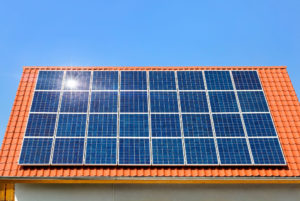
Solar Panel System Cost Factors
When you harness solar energy, you save this planet and influence others to do the same. However, it is not easy to install solar panels without proper planning.
Before installing solar panels, you need to understand everything it entails. Indeed, the number of panels will affect the price, but other aspects would help you save on your electricity. Similarly, the solar energy suppliers will also factor into the type of solar price you get offered.
Solar energy does not leave any carbon footprint and offers bill savings, too. Before investing in solar power, take a look at these factors that influence the energy bills and the cost of installation:
Efficiency
What makes a solar panel great? Indeed, their efficiency will translate to its cost.
For example, you would want to buy solar panels that work rather than ornamenting your roof tiles with chunky solar cells. Therefore, the best solar panels would be the ones that produce usable electricity.
This proportion of energy will make its way to the solar battery storage and minimise your need to produce more electricity.
Its efficiency will depend on the manufacturing quality and installation area. In turn, it influences the price of solar based on the direction the panels face
Having a small roof will minimise the annual electricity generation. However, if you install smaller solar panels with excellent efficiency, you can curb electricity bills.
You must consider the per-square-meter cost and determine if you can afford it.
The best roof space and solar panels will help you achieve an average of 15% to 20% efficiency in today’s world.
Roof’s Pitch Angle
Depending on the contractors you hire, the pitch angle will differ. It will influence the cost of solar electricity because of the generation capacity. For example, some believe the rooftop pitch angle will not influence power generation.
At the same time, some contractors believe that 35 to 45 degrees would be the optimum angle. Indeed, you can get the best ROI from these angles.
Type of Panels
Usually, solar panels have silicon in them. Furthermore, it comes in different forms:
- Monocrystalline
- Polycrystalline
The monocrystalline ones are highly efficient and durable, and the solar cells are smaller. However, the polycrystalline offers almost the same features but at a lower cost without the smallness guarantee. Due to this, the monocrystalline panels cost more than the latter.
Number of Panels Used
As mentioned earlier, the efficiency and price of your solar panels will depend on the size.
If you buy more solar panels, the installation cost will also rise. Moreover, a 1kWp translates to four panels in its solar system size. You will require 16 panels to power your house with 4kWp.
Similarly, depending on the roof size, location and usability, you might also need 12 panels to generate 4kWp.
It would be best to buy high-efficiency solar panels to save on the installation cost. But do you want enough roof space to fit 16 panels? Then, it will be cost-effective to invest in larger, cheaper, and less efficient panels.
You will get the same electricity production, though!
Access to Sunlight in Your Roof Space
The installation costs are also influenced by the latitude of your roof space and the duration of sunlight it receives. Due to this, the functionality of your solar will be affected, in turn influencing the energy generation.
For example, in the North, you will experience shorter days during winter. However, the summers will experience more daylight hours.
Depending on your northern or southern location, the cost of installing solar energy will differ. Along with that, the efficiency will also diminish in the PV panels. Hence, the sun will be a factor when installing a solar panel system.
Here, you can calculate the power output from solar and compare it with the normal on-grid price. You can install a PV system if the light energy seems efficient enough.
South-Facing Roof Dilemma
What is the best way to generate maximum electricity? Your PV array needs to be facing due south. It will bring in excess energy you can send back to the grid and earn compensation.
Would it be impossible to install a solar PV system facing south?
In that case, you can also generate electricity from a west-facing installation. However, the south direction is great for producing the best solar energy and gaining ROI.
These factors influence the cost of buying solar panels. Therefore, you need to consider these when the contractors excavate your location and prep it for installation.
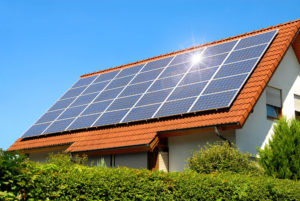
How Much Do They Cost?
According to the latest government data, solar panels have an average household cost of £7800. Furthermore, the solar PV system needs 3kWp and a 20m2 space if you have three residents in your home. It will amount to 12 to 13 solar PV panels during installation.
As mentioned earlier, the energy bills will only be efficient if the power of your panels is higher and taken care of.
With the popularity of saving energy bills using renewable energy, the average solar panel prices have diminished and become cheaper.
The price has fallen about 25% in the last seven years!
Ideally, the energy generation capacity of a single solar panel is 250W. Therefore, to make a 1kWp, you will require four panels.
As mentioned earlier, a 12-panel PV system will be ideal for all energy suppliers to create a 3kWp.
On average, the cost of each solar panel will be anywhere between £400 to £500.
Can You Earn Money from Installing Them?
The Feed-in-Tariff, or FIT, was a scheme introduced by the UK government that brought huge ROI on solar panel prices. However, this Feed-in-Tariff initiative stopped in March 2019.
Under this system, you can generate excess electricity, feed it back into the grid, and save on electricity bills.
The replacement for the feed-in tariff is the Smart Export Guarantee SEG. This SEG introduced a system where people generating energy from PV systems could earn money.
Under the SEG, solar panel owners can sell excess electricity back to the grid, receiving payments from energy suppliers. The rates for SEG payments are set by individual energy suppliers and can vary, offering more flexibility compared to the fixed rates under the FIT.
Unlike the feed-in tariff, the solar panels have to be less than 5MW for you to earn more.
Indeed, the Smart Export Guarantee SEG works differently than the Feed-in-Tariff FIT because the energy supplier will set personalised tariffs.
The SEG payments will help minimise your energy bills and add value to your property.
It means that the essence of your home will maximise, and the property value will increase, too! With the Smart Export Guarantee, you can benefit from installing a solar PV system in terms of cost-effectiveness and real estate.
The export tariff rates offered by the government are reasonable and similar to the ones set by these suppliers. Therefore, you need not worry about the export tariff!
The UK government has made it so that solar power generation is well compensated.
Smart Export Guarantee – Is it Worth it?
The rate offered is 5.6p per kWh or 5.5p per kWh based on the company’s tariff policy. However, you need not sell your excess energy to the company from which you installed the solar panels. Due to this, the competition is set to increase on how much electricity someone can buy.
Here are some examples of utilising the SEG system during electricity generation to save money:
- South-East England will have £240 with SEG as opposed to £120.
- Scotland can earn £195 and not £110.
The actual earnings under the SEG will depend on the specific rates offered by your energy supplier, which can vary based on the market and the supplier’s policies.
Indeed, having the SEG in your electricity quota will give you a huge ROI for the season!
The UK Cost of Solar Power – How Can it Benefit You?
You will get enormous annual savings if you get solar panels from installers registered in England.
Do you want to buy solar to go green, or do you want to cut costs while you are at it?
A monocrystalline solar panel will be the best choice for your energy supplier. Furthermore, you can explore numerous solar installation processes and system sizes that would save you a lot of money on energy bills.
The list provided below is an estimated indicator that does not represent the actual power output for your home in particular. (considered in the higher range)
- A 4-kilowatt peak is the standard system size.
- The number of panels required will be 16.
- Then, the total cost will be £8,000 with an annual energy production of around 3800kWh.
- In turn, this suggests that the estimated bill savings would be around £270
So what does this mean? The curated cost of solar panels is still on the higher side! Even so, people find it beneficial because of the annual bill savings they can harness.
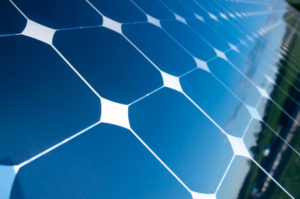
The Breakdown of the Solar Panels Cost
Do you want to understand more about this data? Here is an example to help you with the solar panel context:
- Assumption- 3 bedroom building or property
- Family – 3 residents
- System – 4kWp
- Panels – 16 individual
- Cost – £8,000 (£500 multiplied by 16)
- Space – 25m2
- Energy – 3800kWh
- Savings – £270 and 0.65 tonnes of C02
So, in a three-bedroom apartment with three residents, you will need a solar panel system with a capacity of 4kWp. It means that the number of solar panels will be 16. Furthermore, this amount will need a space of 25m2 to be functional.
The cost will be £8,000, and the energy generation is 3800kWh. You will save up to £270 annually for almost ten years based on previous electricity generation. Therefore, totalling around £2,700 of total electricity cost savings you would not have gotten without solar installation.
You will get one-third of the amount spent on the solar PV system.
The Price Division
There is another aspect that factors into the solar power cost even with the Smart Export Guarantee:
- 80% of the amount spent will be the actual solar panel cost.
- 20% will be the installation and labour cost.
These will depend on the roof’s condition, the type of solar PV system, and accessibility.
Average Cost Price Drop
Solar energy offers a range of advantages, leading to a decrease in prices and an increase in its popularity. The cost of solar panel systems, such as a typical 4kWp setup, has become more affordable over time. The price of these systems varies based on factors like location and the capacity of the solar battery included. Generally, the most efficient solar systems might be priced higher, reflecting their quality and the potential for energy savings. This trend of cost reduction and increased accessibility makes solar energy an increasingly viable option for many.
Find Out How Many Panels Your House Requires
As mentioned, solar panels will have an average cost depending on the roof size, requirements, and location. Moreover, the battery storage in your solar will also determine the capacity in which the electricity is generated. Nonetheless, the different sizes of rooftops will require variable solar panels.
Three-Bedroom Home
If you have three or more residents, a solar panel system with a capacity of 3kWp or 4kWp will be ideal. Therefore the annual electricity will be more than 3000kWh and the space required will be 20m2 to 25m2.
Two-Bedroom Home
For two residents, you will require a 1kWp or a 2kWp system. It comes with three or six solar panels. Therefore, the cost will be accordingly, and the space required is 5m2 to 9.8m2.
Additional Cost
The 20% extra cost of installing a solar panel array on the roof maximises the cost variables:
- Inverter (£1,000 – £15,000
- Solar battery storage (£1,000 – £6,000)
- Solar panel repair (£120 – £500 for every panel)
- Cleaning and maintenance (£10 per panel)
- Scaffolding (£40 for every day)
- Water tank installation (£4,000)
- Roof preparation or repair (£100 – £1,000)
Even with these factors, the average cost of solar panels should be £1,562 per kilowatt peak.
Carbon Footprint Minimisation
Indeed, solar panel installation will reduce electric costs, but it can also reduce the carbon footprint. Therefore, your home will have a sustainable essence.
As mentioned, a 4kWp system can save up to 0.65 tonnes of C02 generation. It means that a standard residential solar PV system will prevent the use of fossil fuel and the pumping of carbon dioxide from it.
If you follow the Energy Saving Trust, you will understand that the 3700kWh generation saves 1 tonne of CO2 in South England!
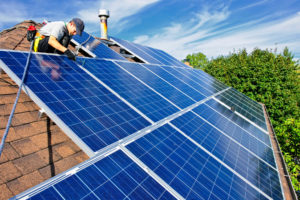
Solar Battery Importance
Did you know you could save 50% of solar electricity by installing a battery?
People in the UK use electricity during the mornings and evenings. It means that the peak time of electricity consumption is during the rising or setting of the sun. Furthermore, the panels’ solar energy generation will be heightened during midday.
It means you will not use electricity when the solar panel is at its peak. Indeed, a solar battery will ensure that this unsynced electricity does not go to waste.
It helps you save a lot of money you can get ROI on. So, what does a solar battery do?
These batteries will save the energy solar panels produce during the day when not in use. Moreover, if you store this excess power, you can utilise it when you require electricity, even at night.
You might wonder if this energy is free; why must you store it?
Indeed, a battery will save up your energy bills and help you receive money from the SEG system. A solar battery will have a storage system, depending on the type. Usually, it houses a 9.6kWh.
Using this will help you generate electricity to power your house for the entire night. For example, in central England, you can use 30% extra energy, which reduces costs by £600 or so!
Solar Thermal System Costs
Usually, solar thermal is beneficial for industrial buildings that require solar-powered thermal energy to function.
The installation cost would be anywhere between £5,000 to £6,000 depending on the meter square and VAT. Moreover, getting hot water will save up costs during the summer months. Here, you can use 60% solar power to create electricity to supply hot water to buildings.
Benefits of Solar Panels
By installing panels, there are numerous benefits that you can harness. Indeed, you can save up on numerous electricity costs, but also save the planet!
Renewable Energy
Solar power is renewable and an evergreen source of energy. Hence, utilising it as an electricity source will benefit the environment. Even while using panels, solar power contributes to the environment’s betterment.
Solar-powered energy used in panels does not require fuel. Therefore, it will only require access to the sun to generate electricity for the entire day.
This technology can be utilised during cloudy days as well!
Maintenance Cost
If you keep your panel system cleaned regularly, then the overall maintenance cost will diminish. Moreover, once installed, it will not require any movement.
It remains solid and static in its place, making it a piece of low-maintenance equipment. However, it would be best to keep it dust-free, debris-free, and the glass panel clean. Doing this every few months will ensure that the panels last up to 10 years.
Electricity Cost
The system generates usable electricity that can replace the main gridline. Therefore, you will not use any of the main power from the government.
The extent of energy cost reduction will depend on the panels’ efficiency, size, and sun alignment. Due to the new SEG initiatives by the UK government, you can now reduce energy bills and earn money. You can do this by exporting the excess power from your battery to the National Grid!
Find Out How Much Electricity Solar Panels Produce
The PV capacity of the UK’s solar generation was an annual 12.8 GW. It represents 3.4% of the annual electricity generation for the country. Moreover, the energy capacity will differ from panel to panel. These numbers are an average of the country’s generation.
Considerations Before Installing a Solar Panel
- The suitability of your roof
- Solar panel system’s size
- Structural inspection
- Solar battery installation
- Condition of your roof tiles
- Comparison of numerous solar panels
If you have considered all of these things, moving forward in the selection process will be ideal. Therefore, the contractors you choose will help you inspect your roof and give you a quote. It will be based on the type and size of the solar panels.
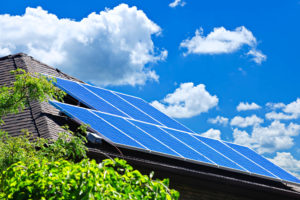
Case Study: Residential Solar Panel Installation
Background
A family in Suffolk was interested in reducing their electricity bills and carbon footprint by installing solar panels on their home. They wanted a solution that would provide significant energy savings and offer a reasonable return on investment.
Project Overview
The family chose a reputable solar installation company, Solar Panels Network, to handle their project. The goal was to install a system that would meet the household’s energy needs and fit within their budget.
Implementation
- Initial Consultation and Site Assessment: The Solar Panels Network team conducted a comprehensive assessment of the family’s energy usage and the roof’s suitability for solar installation. They determined that a 4 kWp system would be ideal for the family’s needs, offering a good balance between cost and energy generation.
- System Design and Panel Selection: The team recommended high-efficiency monocrystalline panels due to their superior performance and durability. They also considered the roof’s pitch and orientation to ensure optimal sunlight exposure throughout the day.
- Installation Process: The installation was completed in three days, with minimal disruption to the family’s daily routine. The team installed 16 solar panels, a solar inverter, and a battery storage system to maximize energy utilization and savings.
Results
- Energy Savings: The system generated approximately 4,000 kWh annually, significantly reducing the family’s electricity bills. They estimated savings of £270 per year.
- Financial Incentives: The family qualified for the Smart Export Guarantee (SEG), which provided additional income by selling excess energy back to the grid.
- Environmental Impact: The installation reduced the family’s carbon footprint by an estimated 0.65 tonnes of CO2 annually.
Summary
This case study demonstrates how a well-planned solar panel installation can offer substantial financial and environmental benefits. The Suffolk family enjoyed lower energy costs and additional income from the SEG scheme while contributing to a more sustainable future. This project showcases the practicality and affordability of solar energy solutions in the UK, even with the initial investment costs.
Expert Insights From Our Solar Panel Installers About Solar Panel Costs
Investing in solar panels is a great long-term decision for homeowners. The initial costs might seem high, but the savings on energy bills and potential earnings from schemes like the Smart Export Guarantee can quickly offset these expenses.
Solar Energy Consultant
Efficiency and quality of the panels are key factors that determine the overall cost and performance of a solar installation. Higher-efficiency panels might cost more upfront, but they offer better energy output and longer lifespan, making them worth the investment.
Renewable Energy Specialist
Many homeowners are surprised to learn that solar panel costs have decreased significantly over the years. With the right setup and government incentives, installing solar panels is more accessible and affordable than ever before.
Senior Solar Installation Engineer
Discover the Power of Solar with Solar Panels Network
Are you navigating the world of solar installations? Look no further than Solar Panels Network, the UK’s trusted partner in harnessing the sun’s potential. Our dedication goes beyond just installations; we’re on a mission to transform how homeowners and businesses across the UK perceive and utilise energy. By choosing us, you’re reducing your carbon footprint and making a smart financial move that promises savings for years ahead. Contact us today and embark on your solar journey.
Summing Up
Did you find out how much installing a PV system off the national grid will cost? Free solar energy will bring colossal ROI even if the Feed-in-Tariff FIT is no longer valid.
The government has introduced the SEG initiative to pay you. It will depend on the annual electricity per kw generation and submission to the national grid. Furthermore, it would be best to get informed about the system size before you install solar panels in your home. Doing so will help you analyse the average cost better.
Usually, a 4kWp capacity will require 16 solar panels to work together. Therefore, the cost can be around £8,000 after taking installation charges.
These depend on the space you can offer, the sun’s alignment, and the solar battery capacity. Indeed, the system size determines the final electricity bill you will be saving on. For example, if you install a 4kWp system, the average savings will be around £270 annually.
With solar panels, you can save money on your prolonged electricity bill and earn recognition in your community! Are you ready to install solar panels after knowing how much solar panels cost?
About the Author
Solar Panels Network stands at the forefront of solar energy solutions, driven by a team of seasoned solar engineers and energy consultants. With over decades of experience in delivering high-quality solar installations and maintenance, we are committed to promoting sustainable energy through customer-centric, tailored solutions. Our articles reflect this commitment, crafted collaboratively by experts to provide accurate, up-to-date insights into solar technology, ensuring our readers are well-informed and empowered in their solar energy decisions.

